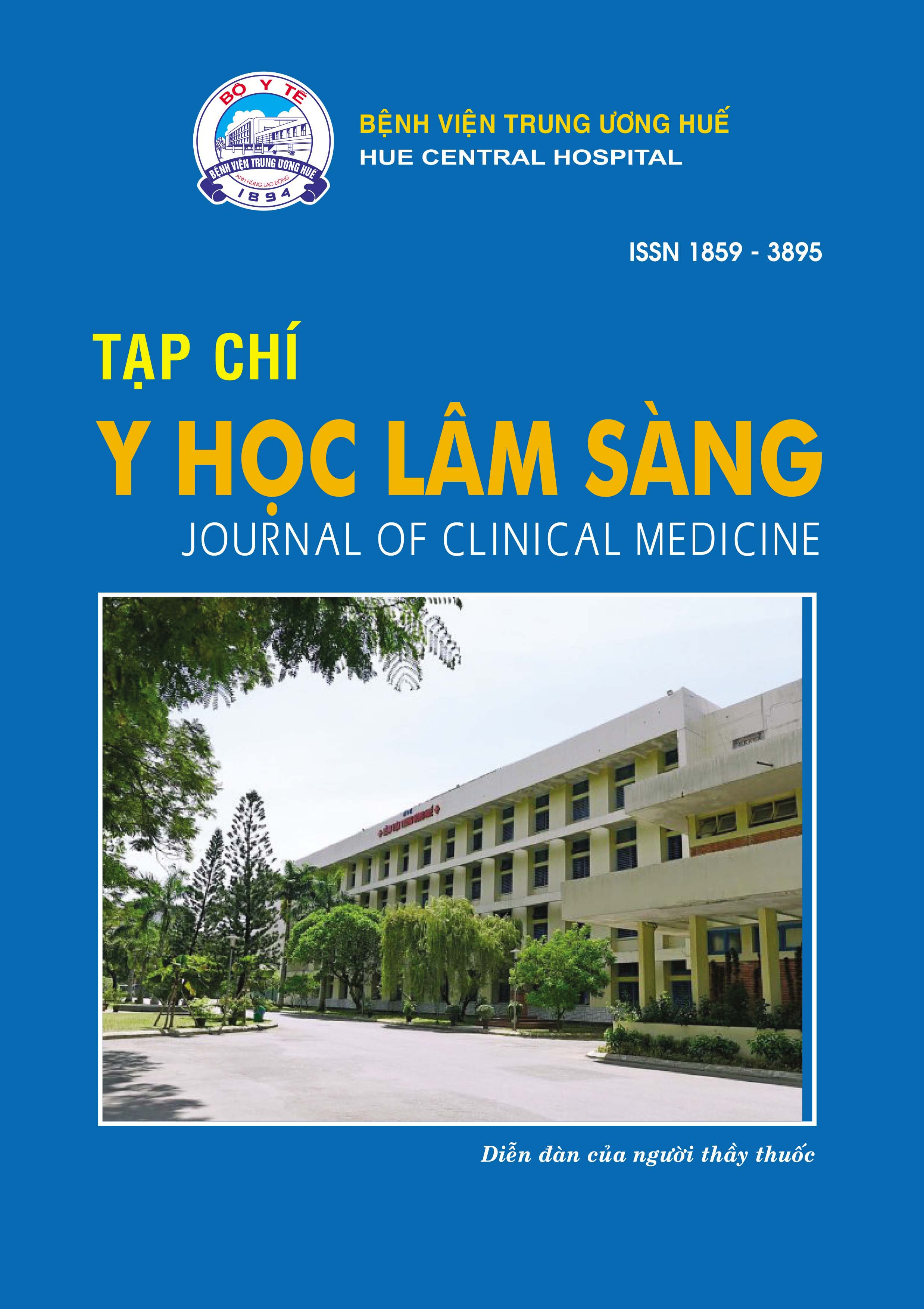Abstract
Background: COG A9961 regimen has been used in the treatment of medulloblastoma in children 3 years of age and older at the National Hospital of Pediatrics since 2008. However, there have been no studies evaluating the toxicity of this regimen.
Subjects and methods: Descriptive, retrospective meduloblastoma patients who were treated at least 1 batch of chemicals according to the regimen A9961 branch B at the Department of Oncology of the National Hospital of Pediatrics from January 1, 2015 to June 31. Results: 37 patients, mean age is 8.4 ± 3.2 (4-15.5). During chemotherapy, the most common clinical toxicity were alopecia (100%), vomiting, weight loss (86.5%), motor paralysis (62.2%), oral ulcers, allergies, diarrhea (35.1%), less common toxicity were hearing loss (13.5%), hematuria (5.4%). Almost clinical toxicity were mild (grade 1 and 2). All patients had hematologic toxicity, 100% of patients had leukopenia, agranulocytosis, anemia; thrombocytopenia were 86.5%. Agranulocytosis was the most severe with grade 3 and 4 recorded in almost patients. Severe neutropenia, anemia and thrombocytopenia were reported in 86.5%, 83.8%, and 18.9% of patients, respectively. The patients with increasing GOT were 62.1%, increasing GPT were 72.9%, mostly mild (91,9%). There were 11 patients with hypercreatinemia, accounting for 29.7%, all with mild levels (grade 1).
Conclusions: Clinical toxicity was mostly mild, transient, reversible after finishing treatment. The most subclinical toxicity was hematologic toxicity. Other toxicity such as elevated liver enzymes, increased creatinine weren’t serious level, weren’t affected treatment.
References
Allison M Martin, Eric Raabe, Charles Eberhart and Kenneth J Cohen. Management of Pediatric and Adult Patients with Medulloblastoma. Current treatment options in oncology 2014, 15(4): 581-94.
Hisham H Abd El-Aal, Mohsen M Mokhtar, E E Habib, Amr T El-Kashef, Ezzat S Fahmy. Medulloblastoma: conventional radiation therapy in comparison to chemo radiation therapy in the post-operative treatment of high-risk patients. J Egypt Natl Canc Inst 2005. 17(4): 301-7.
Uri Tabori 1, Lillian Sung, Juliette Hukin, Normand Laperriere, Bruce Crooks, Anne-Sophie Carret et al. Medulloblastoma in the second decade of life: A specific group with respect to toxicity and management. Cancer 2005, 103(9), 1874-80.
Zeyad Abdelaziz, Basmaa Elsabe, Ahmed Farhod, Amr Abdelkarim, and Shady Fadel. Outcome and toxicity of medulloblastoma in Alexandria, Egypt. Neuro Oncol 2018. 20(2): 47-47.
Y Li 1, R B Womer, J H Silber. Predicting cisplatin ototoxicity in children: the influence of age and the cumulative dose. Eur J Cancer 2004, 40(16), 2445-51.
Piero Fossati 1, Umberto Ricardi, Roberto Orecchia Pediatric medulloblastoma: toxicity of current treatment and potential role of protontherapy. Cancer Treat Rev 2009, 35(1): 79-96.
Roger E Taylor, Clifford C Bailey, Kath Robinson, Claire L Weston, David Ellison, James Ironside et al. Results of a randomized study of preradiation chemotherapy versus radiotherapy alone for nonmetastatic medulloblastoma: The International Society of Paediatric Oncology/United Kingdom Children’s Cancer Study Group PNET-3 Study. J Clin Oncol 2003, 21(8): 1581-91.
J P Krischer, A H Ragab, L Kun, T H Kim, J P Laurent, J M Boyett et al. Nitrogen mustard, vincristine, procarbazine, and prednisone as adjuvant chemotherapy in the treatment of medulloblastoma. A Pediatric Oncology Group study. J Neurosurg 1991, 74(6): 905-9.
| Published | 07-01-2025 | |
| Fulltext |
|
|
| Language |
|
|
| Issue | No. 67 (2021) | |
| Section | Original article | |
| DOI | 10.38103/jcmhch.2021.67.9 | |
| Keywords | bệnh u nguyên tủy bào, hóa trị, độc tính Meduloblastoma, chemotherapy, toxicity |

This work is licensed under a Creative Commons Attribution-NonCommercial-NoDerivatives 4.0 International License.
Copyright (c) 2021 Journal of Clinical Medicine Hue Central Hospital

